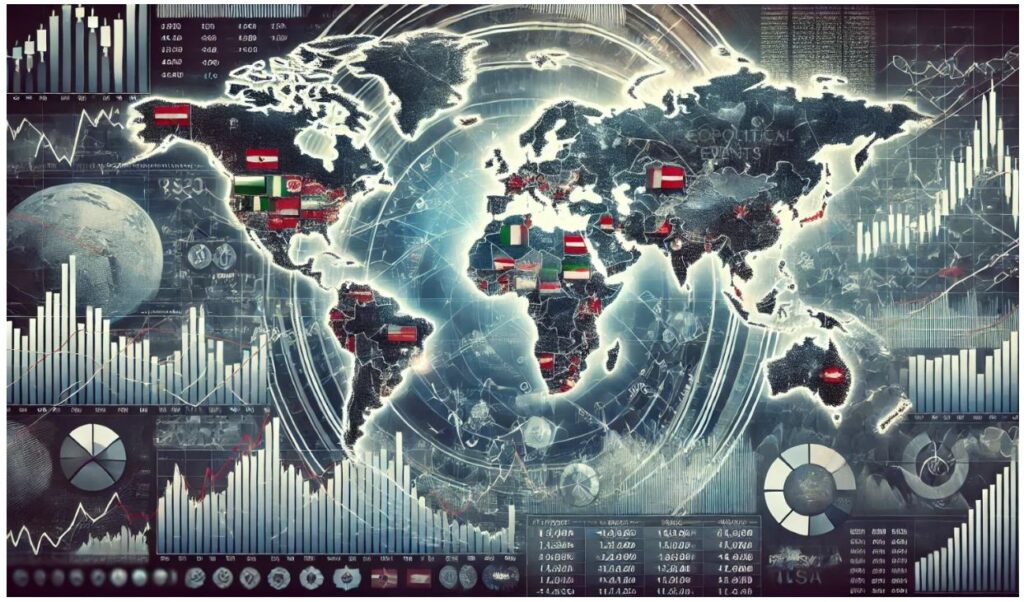Geopolitical challenges are forcing exporters to reassess their strategies by prompting them to diversify supply chains, consider alternative markets, and manage risks more effectively. This shift is driven by increased instability, trade wars, sanctions, and the growing awareness of supply chain vulnerabilities.

Few realistic facts
✅ Red Sea Crisis Fallout – 40% surge in shipping costs–
The Red Sea crisis, fueled by Houthi attacks on shipping in solidarity with Hamas, has disrupted global trade and hurt regional economies. India’s exports have been impacted, with shipping delays and rising costs. While some expect normalization by mid-2025, supply chain disruptions and market volatility are likely to persist.
Factors Contributing to the Crisis:
Houthi Attacks:
Attacks by Yemen-based Houthi rebels on commercial ships in the Red Sea have disrupted shipping routes and caused significant delays.
Rerouting and Longer Transit Times:
To avoid the Red Sea, ships have been rerouted around the Cape of Good Hope, increasing transit times and fuel costs.
Increased Freight Costs:
The disruption has led to higher freight rates and insurance premiums, impacting the profitability of global trade.
Global Supply Chain Disruptions:
The crisis has created a domino effect, impacting various industries and supply chains worldwide.
Potential for Recovery:
-
Maritime experts predict a return to normal shipping traffic in Q2 2025, provided that geopolitical stability persists in the region.
-
A ceasefire in Gaza could lead to a gradual resumption of shipping lines through the Suez Canal, offering a more cost-effective route.
-
Transit rates through the Suez Canal are expected to remain stable, with freight rates potentially declining in the second quarter.
-
However, the crisis is expected to continue to shape market dynamics and supply chains, requiring businesses to adapt and develop resilient strategies
Impact on India’s Exports:
Contraction in Exports:
In August 2024, India’s exports fell 9.3%, driven by Red Sea shipping disruptions and logistical challenges. Petroleum exports were hit hardest, plunging 37.56% to $5.95 billion, reflecting the crisis’s direct impact on trade.
Increased Shipping Costs:
Shipping costs have risen due to the need for rerouting and longer transit times, impacting the profitability of Indian exporters.
Supply Chain Disruptions:
The crisis has led to delays, congestion, and shortages of goods, further impacting exports.
Air Freight Costs Rise:
As exporters seek alternative routes, air freight costs have increased significantly, adding to their financial burden.
Small Exporters Struggle:
Smaller exporters, who rely heavily on exports, are particularly affected, facing job losses and capacity reductions.
Impact on West Asian Countries
Saudi Arabia, with the Red Sea’s longest coastline, relies heavily on its ports for trade.
In March 2024, King Abdullah and Jeddah Ports saw traffic drop by 90% and 70%, severely disrupting operations. The crisis also hit oil exports, prompting Saudi Arabia to halt Red Sea shipments in July 2024 after Houthi attacks on two of its vessels.
✅ US-China Decoupling 2.0 – Mexico & Vietnam emerge as
“near-shoring”-
The global tension stems from China’s heavy dependence on exports. Already battling issues like deflation, rising debt, and a stressed financial sector, the Chinese economy could face an even sharper decline under the weight of these new tariffs. Investors shift focus, India stands to benefit, attracting funds once bound for China.
Rising foreign portfolio inflows are strengthening the rupee, boosting forex reserves, and energizing stock markets. As trade tensions escalate, manufacturers may relocate from China to India, presenting a major economic opportunities to Indian exporters like Frontier Trade Link. However, Indian exporters must meet higher compliance standards to fill the gap left by Chinese suppliers.
CNBC analysis reveals a sharp rise in China-Mexico trade, particularly in components and semi-finished goods. Experts suggest this may be a legal strategy to circumvent U.S. tariffs by leveraging Mexico’s USMCA benefits—where Chinese materials gain “Made in Mexico” status before entering the U.S.
Key drivers behind the trend:
Nearshoring shifts due to global supply chain risks (e.g., port strikes, trade tensions).
USMCA rules allowing value addition in Mexico to qualify for tariff-free U.S. access.
US. election-year tariff threats accelerating the rerouting of Chinese exports.
While controversial, the tactic highlights how trade policies and logistics evolve under geopolitical pressures.
This nearshoring of manufacturing enables companies to change a product’s origin of goods, also referred to as the “economic nationality” of a product.
✅ Russia-Ukraine War’s Silent Impact –
Grains, fertilizers, & rare metals supply chains in chaos. African & Latin American markets now hungry for alternative sources.
The Russia-Ukraine War, which began in 2014 and escalated with the full-scale invasion in February 2022, has had profound and often underreported consequences beyond the immediate military and geopolitical fallout.
Overview of its “silent impact”—less visible but far-reaching effects on global economies, societies, and future stability.
Global Food Security & Agricultural Disruptions
Ukraine and Russia are major exporters of wheat, corn, barley, and sunflower oil, supplying 30% of global wheat exports.
Blockades of Black Sea ports (partially eased by the 2022 grain deal, later collapsed) caused food price spikes, hitting Africa and the Middle East hardest.
Farmland destruction (landmines, occupation) threatens Ukraine’s long-term production capacity.
Energy Market Shocks & Inflation
Sanctions on Russian oil/gas triggered energy price surges in Europe, leading to recession risks and accelerated green energy transitions.
Developing nations faced fuel shortages and inflation, exacerbating poverty.
Germany and other EU countries scrambled to replace Russian gas, reshaping global LNG markets.
Displacement & Humanitarian Crisis
Over 6 million Ukrainians are internally displaced; 6.5+ million refugees fled to Europe (biggest crisis since WWII).
Silent strain on host countries: Housing shortages, healthcare pressures, and integration challenges (e.g., Poland, Germany).
Psychological trauma: A generation of Ukrainians faces long-term mental health struggles (PTSD, family separations).
Economic Ripples & Supply Chain Strains

Add comment